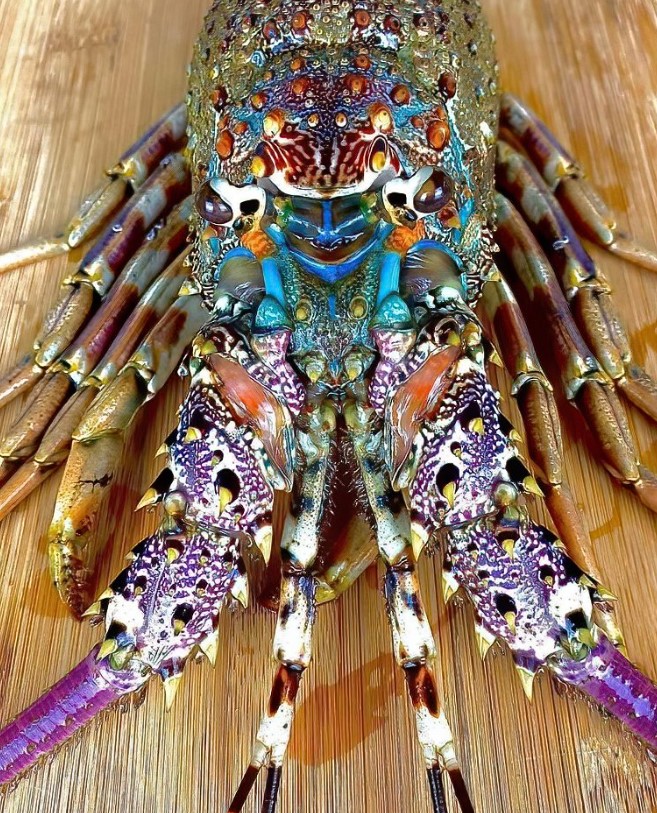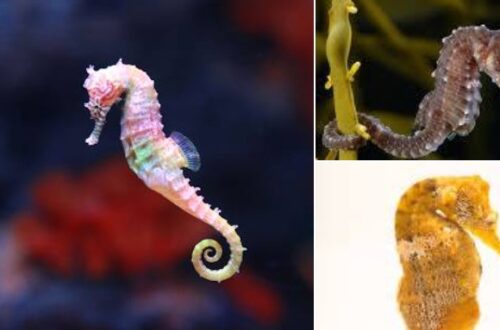Tropical rock lobster (Panulirus ornatus) is a large spiny lobster with 11 larval stages. It migrates annually from the Torres Strait to Yule Island in the Gulf of Papua in order to breed. After the migration the sexes segregate by water depth. Males enter shallower water and females enter deeper water until the eggs have hatched. Female Panulirus ornatus produce up to three broods with a reduction in size of each subsequent brood.
There is no return migration of breeding adults. Reproductive migration across the Gulf of Papua occurs in order to disperse larvae in oceanic currents that favour their distribution near the Torres Strait. Dispersed throughout the eastern coast of Australia, Panulirus ornatus larvae must migrate as juveniles to the adult habitat in the northern Torres Strait. From there, they remain in specific reef complex for 1–2 years until they are of breeding age and undertake the annual mass migration to breed.
The Panulirus ornatus, also known as the tropical rock lobster, ornate rock lobster, ornate spiny lobster, and ornate tropical rock lobster, is a large edible spiny lobster that has been successfully bred in captivity and has 11 stages of its larval development.
Panulirus ornatus has an extensive geographic range in the Indo-Pacific, from the Red Sea and KwaZulu-Natal in the west to Japan and Fiji in the east. In the middle of this expansive range is the island nation of Fiji.
Crayfish Originate From The Crystal Pure Waters Of The Great Barrier Reef’s Lagoons
These lobsters are only ever found at relatively shallow depths, usually not going deeper than fifty meters.
In the majority of its range, the lobster is caught with nets or spears; however, a commercial fishery has been in operation in Northeast Australia consistently since 1966; the Great Barrier, Reef Marine Park Authority, is in charge of policing the species’ harvesting.] The species can also be found in the Mediterranean after migrating from the Lesser Antilles through the Suez Canal.
Crayfish Originate From The Crystal Pure Waters Of The Great Barrier Reef’s Lagoons
P. ornatus consumes a wide variety of invertebrates, ranging from bivalves and gastropods to other small crustaceans and other types of crustaceans. These lobsters rely on carotenoids not just for their source of energy but also for a variety of different functional benefits, including successful reproduction, post-larval development, antioxidants, and even tolerance to stress. When it comes to reproduction in an aquaculture facility, many of these lobster species depend on crustacean foods. One of the most abundant components in these meals is called a carotenoid, and its exact name is astaxanthin. Experiments have revealed that the carotenoid level supplied by these feeds alone is insufficient for the development of lobsters. Many diets also rely on nutrients from blue and green-lipped mussels.
Crayfish Originate From The Crystal Pure Waters Of The Great Barrier Reef’s Lagoons
To reproduce, the Panulirus ornate bird travels yearly from the Torres Strait to Yule Island, located in the Gulf of Papua. Ovary development, mating, and the first oviposition occur during the migration period, which begins in the middle to late part of August. When the Panulirus ornatus population completes its migration and settles on the reefs along the eastern seaboard of the Gulf of Papua, this is the time that the larvae are released.
Crayfish Originate From The Crystal Pure Waters Of The Great Barrier Reef’s Lagoons
Panulirus ornatus begins its breeding season in November, and it lasts until either March or April. The sexes will divide as they reach the Gulf of Papua, depending on the depth of the ocean. The males travel into shallower water when the eggs hatch, while the females move deeper into the sea. A female Panulirus ornatus produces successive broods, each of which is smaller than the one before it. In her lifetime, a woman can have up to three lineages.
Crayfish Originate From The Crystal Pure Waters Of The Great Barrier Reef’s Lagoons
The majority of adults who can reproduce are three years old. The carapace length of mating males can range from 100–150 mm, whereas the carapace length of females can range from 90–120 mm. In general, mating males are more significant than females. Breeding adults have a high mortality rate once they have produced offspring.
Crayfish Originate From The Crystal Pure Waters Of The Great Barrier Reef’s Lagoons
There is no evidence of a migration back of adults capable of breeding. The reproductive migration throughout the Gulf of Papua is to spread larvae in oceanic currents that favor their distribution close to the Torres Strait. Panulirus ornatus larvae are found all over the eastern coast of Australia. Still, to reach their adult home in the northern Torres Strait, they must move when they are juveniles. After that, they stay in the same reef complex for another two years until they reach the age at which they may breed. They participate in the yearly mass migration to spawn.





